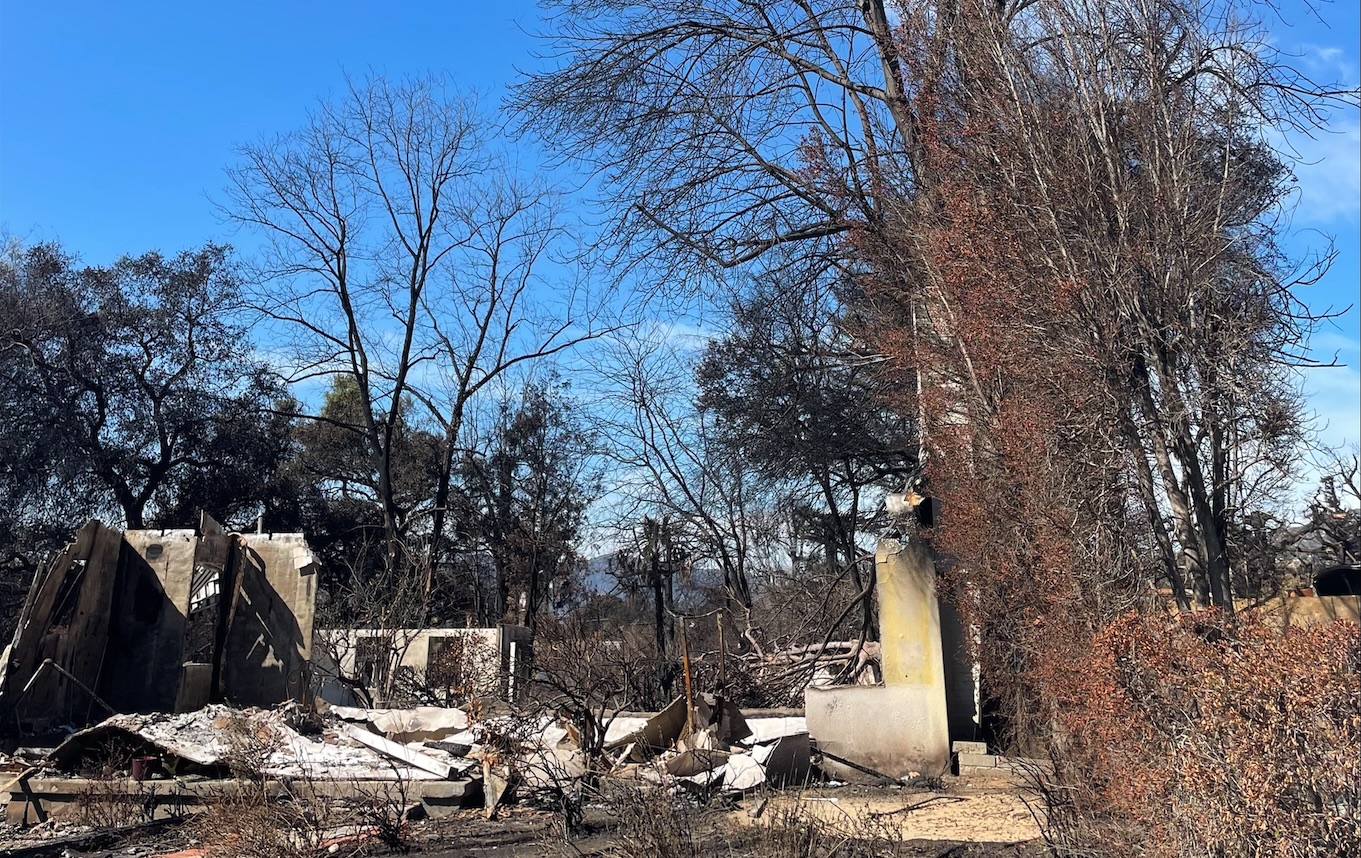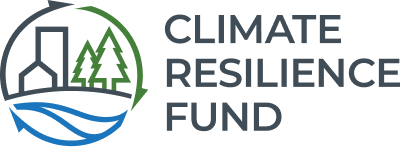Wildfire Recovery and Resilience: Lessons in Seeing, Learning, and Planning

In late February, I joined with a small group of funders and firefighters to witness the impact of the recent wildfires in Los Angeles County. With gratitude to the Fire Up Program, we were thoughtfully guided through the site of the Eaton Fire and heard from firefighters who had fought the blazes.
As the program officer of the Wildfire Resilience Funders network, I had been tracking not only the news, but also the dedication of our members and other philanthropists. I remain impressed by the way that organizations such as Philanthropy CA quickly shared vetted funds and disseminated information to help coordinate efforts, while others, such as GRoW Annenberg, had been offering direct support, including support for firefighters through the Fire Up Program and coordinating funder visits to the fire scars.
Yet, seeing the devastation of a structure-to-structure conflagration with my own eyes and then hearing directly from firefighters who had been there was an entirely different experience, one that was sobering in a way that is difficult to describe. Driving into Altadena, the fire damage began to appear on certain structures and then moved into entirely flattened neighborhoods with only chimneys, rebar, and surprisingly, trees left in many cases. Standing in front of the lot of his childhood home, a firefighter shared his personal story of fighting the fire, losing his own and his parents’ homes, and having to relocate his family. The stories of his family’s legacy and involvement in the Altadena community and the devastation of having to relocate were pointed reminders of the realities of displacement and recovery.
Listening to that firefighter and others whose lives have been uprooted by the fires brought forward new questions for someone like me who is more often focused on building resilience in advance of a fire. Those questions became the focus of our WRF network-wide meeting on March 6. Facilitated by Katie Oran of Philanthropy CA, the meeting centered on learning from those studying and supporting communities impacted by wildfire-related displacement.
Meeting panelists:
- Dr. Crystal Kolden, Director of the UC Merced Fire Resilience Center and an associate professor of Fire Science
- Dr. Nicole Lambrou, Assistant Professor, Urban and Regional Planning, College of Environmental Design, Cal Poly Pamona
- Kristin Marcell, Network Director, Climigration Network
- Tiernan Doyle, Strategy Director, Fire Adapted Community Network (FAC NET)
The panelists addressed some of the hard truths revealed by the research – that many of those displaced by a wildfire have not seen their homes rebuilt, nor their communities restored – before turning their attention to ways we might improve those outcomes. Crystal and Nicole began the meeting by sharing some of their own research, which showed that recovery after a wildfire is typically slow and spotty. They noted that with some recent fires less than half of all homes were ever rebuilt, and then underscored that the results were typically the worst where the need was the greatest. Moreover, they stressed that the ongoing emphasis on rebuilding homes rather than restoring communities has led to other suboptimal outcomes, including a push to rebuild in high-risk areas and the facilitation of gentrification.
Kristen and Tiernan then pivoted to some of the promising possibilities they’ve seen in their work with communities, including some ideas that were elevated in a community discussion series that they had cohosted. Kristen echoed the importance of thinking about recovery as an all-of-society issue, and then spoke to the need for advanced planning, noting that the communities that have done the best tend to be those that have prepared the most. Tiernan also emphasized the impact at the community scale, adding the need to consider the increased costs that a community must face after a disaster, not only from displacements but also upon return, from the increases in insurance premiums and utility costs, to those in transportation and mobility and accessing basic services, let alone the often unaddressed emotional and psychological toll.
Looking ahead, they flagged four ways that together we can do better.
- Empowering community stewardship, looking beyond homeowners
- Reducing vulnerability, inclusive of reenvisioning case management systems and providing mental health support
- Building recovery capacity, engaging with local services and developing response scenarios
- Embracing cyclical planning, encouraging and enabling communities to conduct needs assessments and develop comprehensive disaster recovery plans
After the meeting, my thoughts returned again to the Eaton Fire, the impact on that firefighter and so many families, and my new understanding of the importance of pre-fire recovery planning. To honor what has been hard-learned by those directly affected by past fires and displacement, it is critical to continue to explore these whole-of-community approaches and begin planning for the entire fire cycle if we are to achieve better outcomes in both resilience and recovery. Many thanks again to the team at FireUp, as well as to our speakers and the WRF community for continuously working on how we can do so, together and better.
